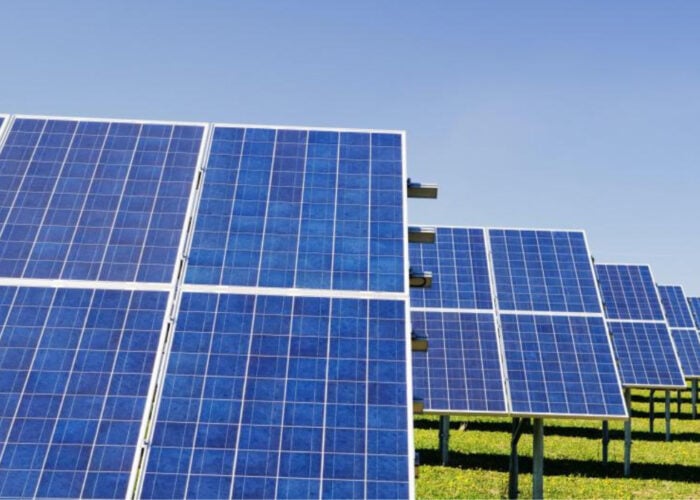Google’s Strategic Investment in LDES Technology: A Catalyst for Sustainable Development Goals
Introduction: A Global Partnership for Sustainable Energy
A global commercial partnership has been established between Google and Milan-based startup Energy Dome. The agreement includes Google’s first-ever investment in Long-Duration Energy Storage (LDES) technology, specifically targeting the deployment of Energy Dome’s innovative CO2 Battery system. This collaboration is poised to significantly advance several key United Nations Sustainable Development Goals (SDGs) by enhancing the reliability and accessibility of renewable energy for Google’s global operations.
Advancing SDG 7: Affordable and Clean Energy
The partnership directly addresses the objectives of SDG 7 by working to ensure access to affordable, reliable, and modern energy for all. The core of the initiative is to overcome a primary limitation of renewable energy sources.
- Enhanced Energy Storage: Unlike conventional lithium-ion batteries, which typically offer four hours or less of storage, Energy Dome’s CO2 Battery provides a long-duration solution, capable of storing and dispatching energy for 8 to 24 hours.
- 24/7 Renewable Power: This extended storage capacity is critical for enabling consistent power supply from intermittent sources like solar and wind, moving closer to the goal of 24/7 carbon-free energy.
- Accelerating Clean Energy Transition: By investing in this technology, Google aims to facilitate a more robust and reliable grid powered by renewable sources, a key target of SDG 7.
Fostering SDG 9: Industry, Innovation, and Infrastructure
This investment exemplifies the principles of SDG 9, which promotes building resilient infrastructure, fostering inclusive and sustainable industrialization, and encouraging innovation. The CO2 Battery technology represents a significant industrial innovation.
- Charging Cycle: The system utilizes excess energy from renewable sources to power the compression of carbon dioxide gas into a liquid state within large, dome-shaped facilities.
- Discharging Cycle: When energy is required by the grid, the stored liquid CO2 is heated and allowed to expand back into a gas.
- Power Generation: This expansion process drives a turbine, generating electricity that is fed back into the grid, creating a closed-loop, sustainable energy infrastructure.
Google’s assessment is that this technology has the potential to “commercialize much faster” and can be brought “to scale faster and at lower costs,” thereby upgrading energy infrastructure in line with SDG 9’s targets.
Driving SDG 13: Climate Action and SDG 12: Responsible Production
The initiative is a direct contribution to SDG 13 (Climate Action) and SDG 12 (Responsible Consumption and Production). By enabling round-the-clock reliance on clean energy, the partnership helps mitigate climate change and promotes sustainable corporate practices.
- Reducing Fossil Fuel Dependency: The LDES system reduces the need for fossil-fuel-based power plants to provide grid stability when renewable sources are unavailable.
- Corporate Climate Goals: The partnership is a cornerstone of Google’s strategy to achieve its ambitious goal of operating on 100% carbon-free energy, 24/7, by 2030.
- Sustainable Production Patterns: This commitment demonstrates a large corporation actively integrating climate action and responsible resource management into its core operational strategy, setting a precedent for sustainable production.
Embodying SDG 17: Partnerships for the Goals
The collaboration between a global technology leader like Google and an innovative startup like Energy Dome is a powerful example of SDG 17, which calls for revitalizing global partnerships for sustainable development. This strategic alliance leverages the strengths of both entities to accelerate progress toward a shared sustainable future.
Relevant Sustainable Development Goals (SDGs)
SDG 7: Affordable and Clean Energy
- The article focuses on a new technology for long-duration energy storage (LDES) to support renewable energy sources like solar and wind. This directly relates to ensuring access to affordable, reliable, and sustainable energy. The partnership aims to help Google operate on renewable energy 24/7, which is a core objective of this goal.
SDG 9: Industry, Innovation, and Infrastructure
- The partnership between Google and Energy Dome represents an investment in innovative and clean technology. The article highlights the development and scaling of new energy infrastructure (CO2 batteries) to make industrial operations (Google’s data centers) more sustainable and reliant on clean energy.
SDG 13: Climate Action
- By enabling 24/7 use of renewable energy, the LDES technology is a direct measure to combat climate change. It reduces the need for fossil-fuel-based power when renewable sources are unavailable, thus mitigating greenhouse gas emissions from Google’s operations.
SDG 17: Partnerships for the Goals
- The article explicitly describes a “global commercial partnership” and an investment between Google, a major corporation, and Energy Dome, a startup. This collaboration to scale up and commercialize a clean energy technology exemplifies the multi-stakeholder partnerships needed to achieve sustainable development.
Specific SDG Targets
SDG 7: Affordable and Clean Energy
- Target 7.2: By 2030, increase substantially the share of renewable energy in the global energy mix. The article states the technology allows Google to “rely on renewable power more even when there’s no wind or sun,” directly contributing to increasing the share of renewables in its energy consumption towards its “24/7 by 2030” goal.
- Target 7.a: By 2030, enhance international cooperation to facilitate access to clean energy research and technology… and promote investment in energy infrastructure and clean energy technology. The article is a clear example of this, detailing Google’s “global commercial partnership” with and investment in the Milan-based startup Energy Dome to advance its LDES technology.
SDG 9: Industry, Innovation, and Infrastructure
- Target 9.4: By 2030, upgrade infrastructure and retrofit industries to make them sustainable… with greater adoption of clean and environmentally sound technologies. Google is adopting Energy Dome’s CO2 battery technology to upgrade its energy infrastructure, making its operations sustainable by enabling constant use of renewable power.
SDG 13: Climate Action
- Target 13.2: Integrate climate change measures into national policies, strategies and planning. While the article discusses a corporate strategy, Google’s goal to “achieve its goal of operating on renewable energy 24/7 by 2030” is a significant private-sector climate action strategy that aligns with the intent of this target.
SDG 17: Partnerships for the Goals
- Target 17.7: Promote the development, transfer, dissemination and diffusion of environmentally sound technologies. The partnership aims to “bring this technology to scale faster and at lower costs,” which is a direct effort to develop and diffuse an environmentally sound technology.
Implied Indicators for Measuring Progress
SDG 7: Affordable and Clean Energy
- Indicator 7.2.1 (Renewable energy share in the total final energy consumption): The article’s central theme is increasing the reliability of renewable energy. Progress can be measured by the percentage of time Google’s operations are powered by renewable sources, with the ultimate goal being 100% (or 24/7).
SDG 9: Industry, Innovation, and Infrastructure
- Indicator 9.4.1 (CO2 emission per unit of value added): Although not explicitly mentioned, the purpose of using 24/7 renewable energy is to eliminate carbon emissions from electricity consumption. A key metric for success would be the reduction of CO2 emissions from Google’s operations.
SDG 13: Climate Action
- Indicator 13.2.2 (Total greenhouse gas emissions per year): The success of this technology in helping Google achieve its 2030 goal would be directly measured by a reduction in its total annual greenhouse gas emissions.
SDG 17: Partnerships for the Goals
- Financial Investment and Technology Commercialization: The article mentions Google has “invested in its long duration energy storage (LDES) tech” and aims to “commercialize much faster.” The amount of investment and the speed of commercial deployment serve as direct indicators of the partnership’s success.
Summary of SDGs, Targets, and Indicators
| SDGs | Targets | Indicators |
|---|---|---|
| SDG 7: Affordable and Clean Energy |
7.2: Increase share of renewable energy.
7.a: Enhance international cooperation and investment in clean energy technology. |
7.2.1: Renewable energy share in total final energy consumption (implied by the “24/7 by 2030” goal). |
| SDG 9: Industry, Innovation, and Infrastructure | 9.4: Upgrade infrastructure and adopt clean technologies for sustainability. | 9.4.1: CO2 emission per unit of value added (implied by the shift away from non-renewable energy). |
| SDG 13: Climate Action | 13.2: Integrate climate change measures into strategies. | 13.2.2: Total greenhouse gas emissions per year (implied as the outcome of using 24/7 renewable energy). |
| SDG 17: Partnerships for the Goals | 17.7: Promote the development and diffusion of environmentally sound technologies. | Financial investment and speed of commercialization of the LDES technology (mentioned as an investment to “bring this technology to scale faster”). |
Source: engadget.com







